
When it comes to Italian pasta, it is always necessary to take into account many different regional variations. In addition to being the world’s leading producer and consumer of dry, fresh and stuffed pasta, Italy boasts the greatest variety of shapes and different ways of cooking it. It is not surprising, in this regard, that some kinds of pasta have obtained the PGI certification.
PGI CERTIFIED ITALIAN PASTA
- Pasta di Gragnano PGI – The pride of the Campania tradition, the bronze-drawn Pasta di Gragnano that has been PGI-certified since 2013, is produced with durum wheat semolina and protected by a Consortium that brings together 14 producers. On less than 15 square kilometres, 3,500 quintals of pasta are made every day, of which more than 75% are destined for markets abroad;
- Maccheroncini di Campofilone PGI – Very thin strands of pasta made in Campofilone (Abruzzo) with the best flours and eggs from free-range hens, without adding water. It goes well with meat sauce, but also with white fish sauces;
- Pizzoccheri della Valtellina PGI – This pasta is available both, dry and fresh, and is a specialty of the Sondrio province (Lombardy). It is obtained by mixing at least 20% buckwheat flour with flours of other cereals. In the dry form, 1.5 million kg are produced per year. It has been PGI certified since 2016. This product is protected by the Consortium founded in 2018.
REGIONAL IS THE KEYWORD
Bigoli, Veneto
Typical of Venetian cuisine, but also widespread in some areas of Lombardy, bigoli (or bigoi) are a long and rough pasta, ideal for pasta dishes with abundant sauces. It seems that they were born in Padua in 1600 from the idea of a pasta maker who had patented the machinery to make them, while their name comes from the dialect word “bigàt”, or caterpillar: shape and thickness are reminiscent of this small animal.
How to try them: from the most typical duck ragout to the flavors of Venetian or rovigotto like the bigoi in sauce, prepared with sardines or anchovies and onions.
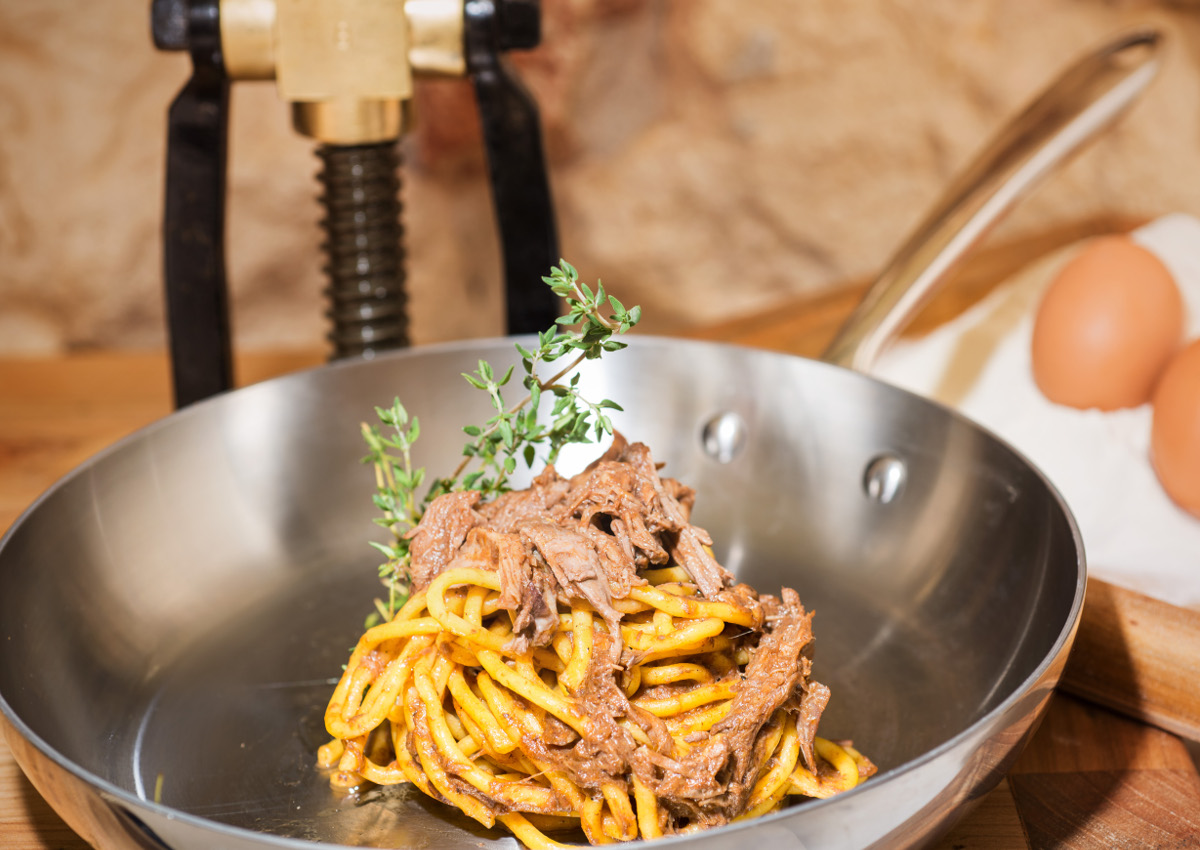
Pizzoccheri, Lombardy
The village of Teglio, in Valtellina, can boast the invention of the pizzoccheri: similar to thick dark-coloured tagliatelle, they are prepared with buckwheat flour to which they owe their grey colour. Their name seems to derive from the root “pit” or “piz”, with the meaning of “pezzetto” (little piece), or from the word “pinzare” (staple), i.e. “schiacciare” (squash), referring to the flattened shape of the pasta. Other hypotheses would trace the word pizzoccheri back to the Lombard “bizzo”, or “bite”.
How to try them: in the traditional recipe, the pasta is cooked together with potatoes and cabbage and then seasoned with melted butter flavoured with garlic and Casera, a cow’s milk cheese from the province of Sondrio.
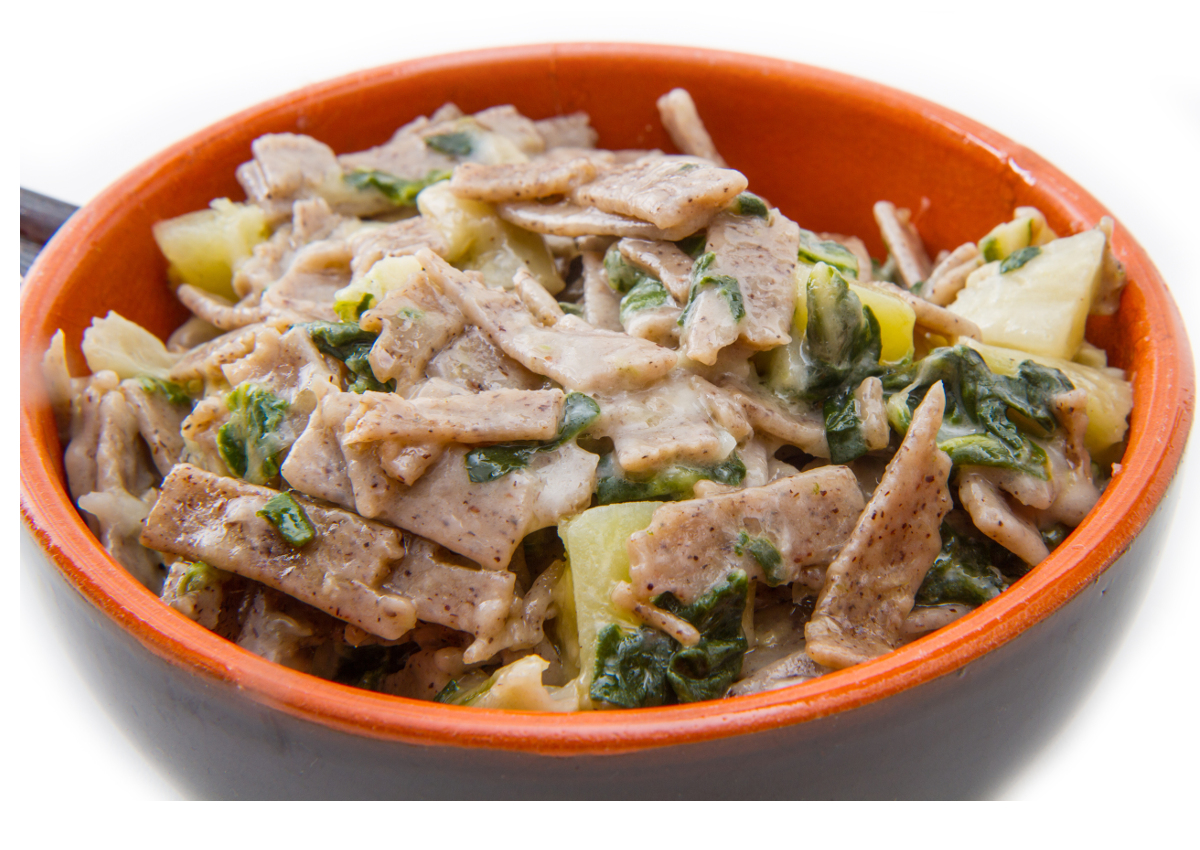
Agnolotti, Piedmont
Agnolotti are a speciality of stuffed pasta typical of the provinces of Asti and Alessandria, in the area of Monferrato in Piedmont. They are square-shaped egg pasta sheets, filled with roast pork, rabbit and veal. As for the name, according to popular tradition it derives from that of a Monferrato cook, Angiolino, called Angelòt, who formulated the recipe.
How to try them: they are traditionally served in broth or seasoned with roast sauce or meat sauce.
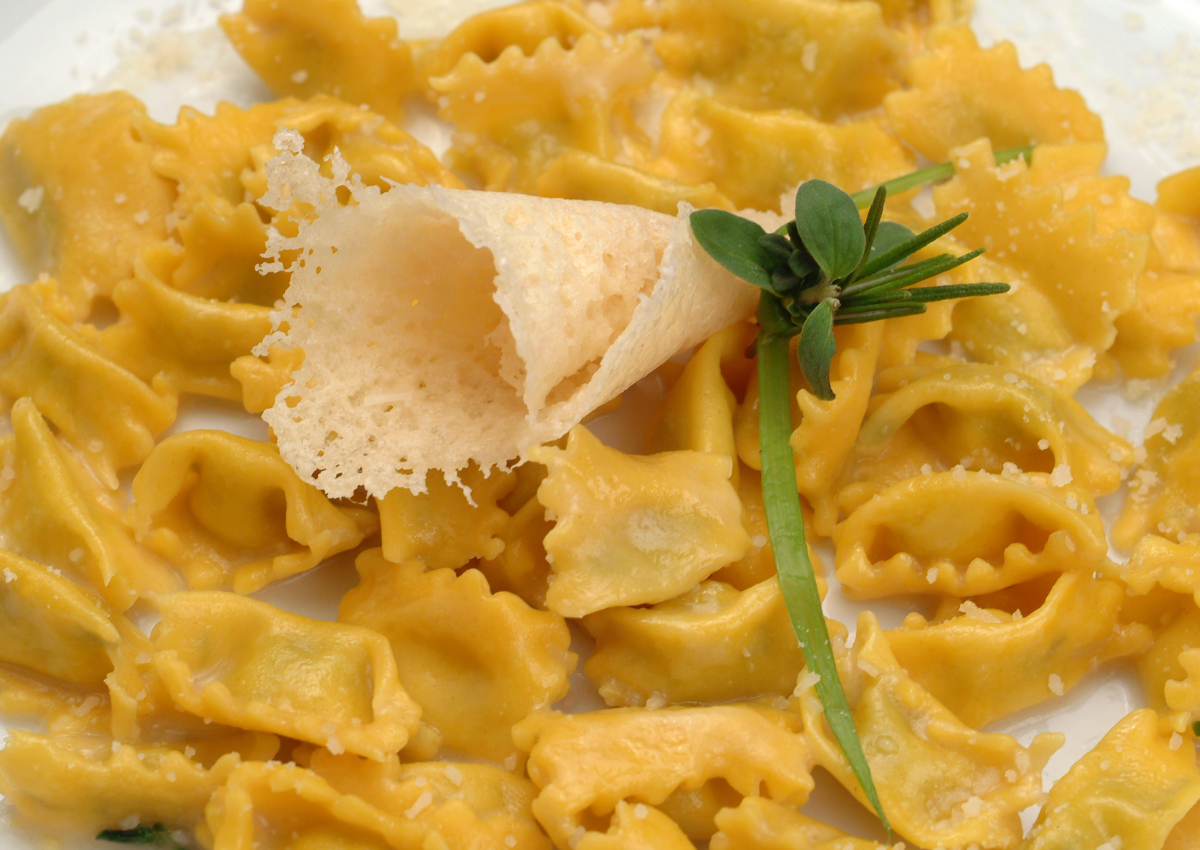
Cappelletti, Emilia Romagna
In Emilia Romagna, a typical type of pasta is cappelletti: its origins date back to the nineteenth century and its name derives from their characteristic shape that recalls, in fact, that of a hat. Cappelletti are prepared by cutting the egg pasta sheet filled with a delicious meat or cheese filling into circles or squares. Cappelletti were considered a symbol of wealth and opulence and the most humble families only allowed themselves this dish during holidays, such as Christmas: for this reason, to wish “cappelletti on the table” meant to wish prosperity.
How to try them: in broth or seasoned with pork meat sauce.

Bucatini, Lazio
Typical of the Roman tradition, bucatini are a long pasta characterized by a hole in the middle made with the use of a stick with a round or square section. It seems that the bucatino was one of the types of pasta most loved by composer Gioacchino Rossini, and that the musician had commissioned the creation of a silver syringe created specifically to fill them at best, especially with goose liver, one of his favorite foods.
How to try them: today they can be prepared with many different sauces, but, if you travel to Lazio, you can not help but taste a dish of bucatini all’amatriciana, with pork cheek and tomato ragout.
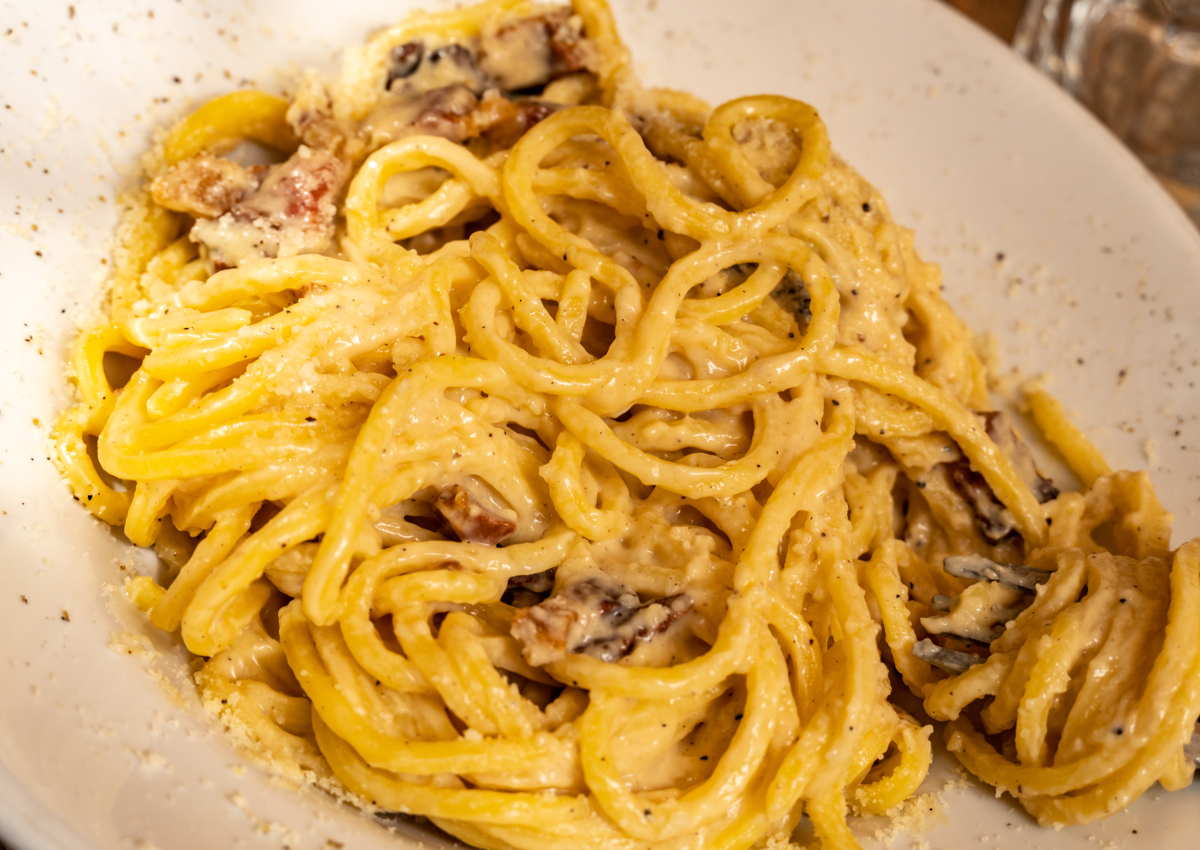
Paccheri, Campania
Originating from the Neapolitan tradition, paccheri are a type of durum wheat semolina pasta similar to maccaroni, but much larger. The term derives from the ancient Greek which in Italian language becomes “pacca”, that is, the slap given by an open hand but without hostility: the pasta in fact has a size higher than normal and is generally accompanied by tasty condiments.
How to try them: they are usually accompanied by full-bodied sauces, such as ragout, and can also be stuffed with ricotta. A traditional recipe from Campania is paccheri alla sorrentina, seasoned with a sauce made with San Marzano tomatoes, mozzarella, caciocavallo, chilli, oil and basil.
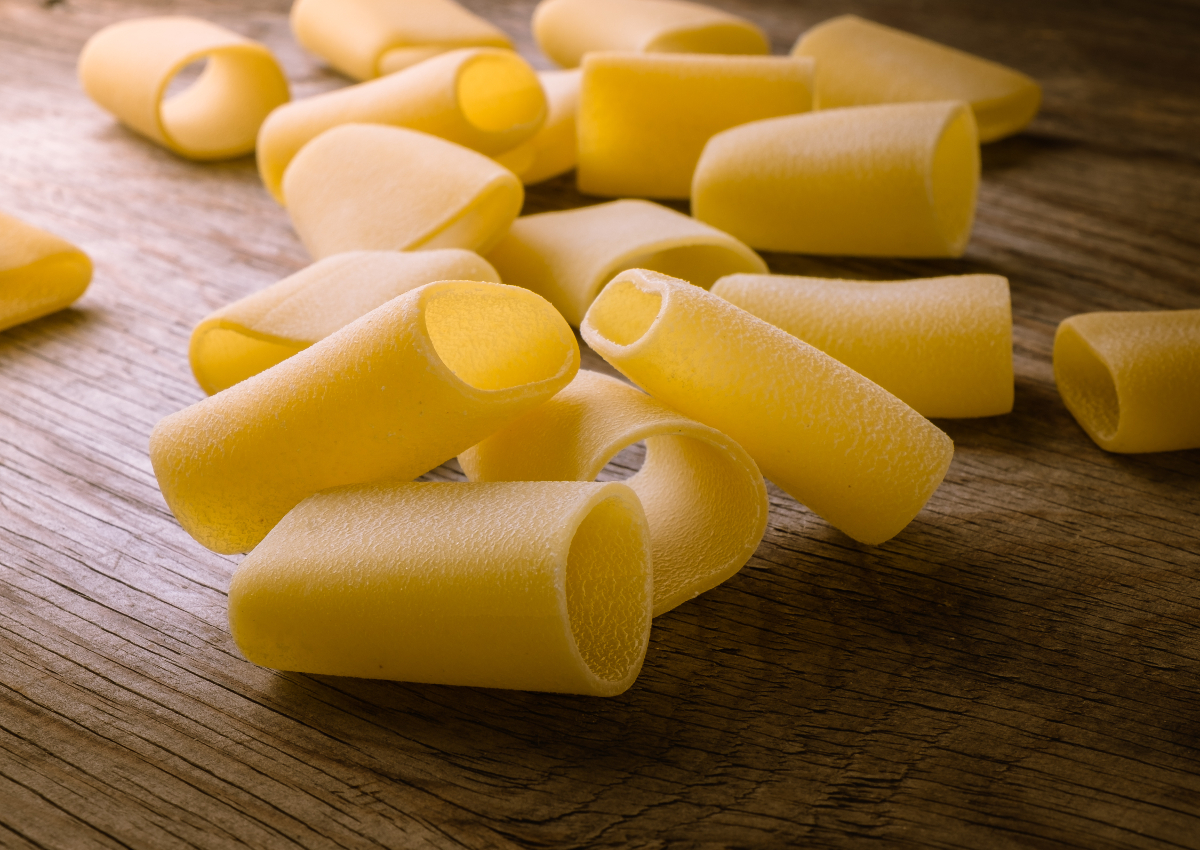
Orecchiette, Puglia
Typical of Puglia and Basilicata, orecchiette are prepared with flour, water and salt. The shape recalls that of small ears, from which the name derives; in the dialect of Bari, however, they are also known as “L strasc’nat”, a term that recalls the method of preparation with which the pasta takes shape when it is dragged on the work table. However, the origins of orecchiette are uncertain: according to some, they come from Provence and were introduced to Apulia by the Angevins in 1200, while others claim that they spread thanks to the Swabian-Norman domination in the territory of Sannicandro di Bari.
How to try them: they are seasoned with turnip greens, with a tomato sauce with basil, with ricotta, or with meat stew.

Malloreddus, Sardinia
Malloreddus are the typical Sardinian dumplings: a short pasta born from the union of wheat semolina, water and, in the past, saffron, an ingredient that is used less and less for their preparation. Their name in Sardinian means “calves” as, according to peasant tradition, their shape resembles that of a newborn calf. In reality, they are very similar to small shells with striped belly, a decoration made through the use of straw baskets called “ciuliri” that are widespread in Sardinia.
How to try them: the most traditional malloreddus are prepared in the campidanese way, with a sausage ragout and a sprinkling of Sardinian pecorino cheese.

